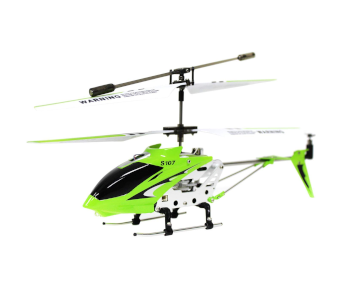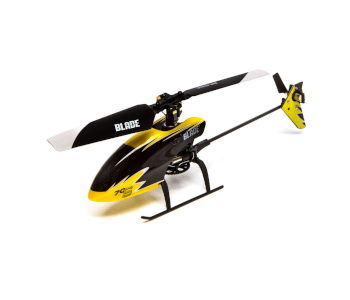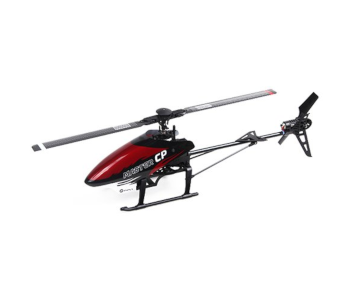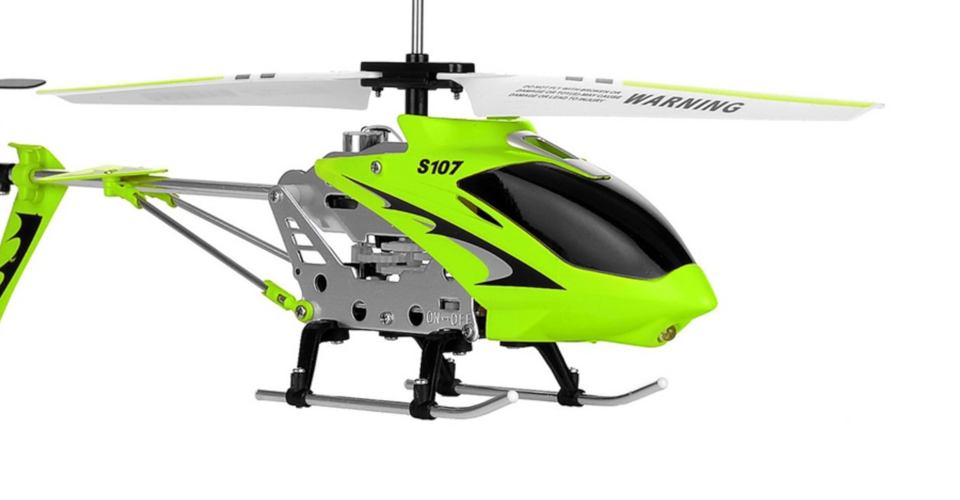A Beginner’s Guide to Flying RC Helis – What You Need to Know
Flying RC helis is something a lot of people would like to try, yet very few ever do. All radio-controlled drones, planes, choppers, and blimps can take to the air of course. The difference is in the way they launch, perform in the sky, and land. This guide breaks down how to fly RC whirlybirds in plain English. First, let’s look at the reasons why this incredible hobby is taking off (pun intended).
RC helicopters have been around for eons, but it used to be something of an elitist hobby. That was because the models were much more expensive than regular RC planes. Earlier copters were also difficult to control and maintain. None of these things apply to the extent they once did.
RC Helicopter Information Overload

The reason that continues to put people off flying RC helis is information overload. The choices are also overwhelming, especially for the uninitiated. It’s also fair to say that there’s some junk out there though it’s not always easy to spot. Price alone doesn’t determine quality either. Some cheaper models can offer fantastic value, and there are costlier products that don’t.
It’s possible to find fantastic RC copters for every budget, skill level, and type. The radio control equipment for these birds has come a long way in recent years and is accessible to all. I include a few examples from each category so that you can see the types of models on offer.
Fun, Rewarding, Addictive
Some pilots prefer to fly RC helicopters above all other craft. That’s because they offer a far more exciting experience. The hobby provides fans with tremendous fun. It’s also rewarding and addictive but in a good way. The downside is the learning curve for those who want to become skilled heli pilots. For others, learning is half the fun. And RC choppers at the beginner level are child’s play.
RC helis are not like the popular drones that anyone can operate. They are for flying—not filming—enthusiasts. There are racing quadcopters, but that’s also a different flight experience. RC planes continue to be popular, but they lack the short-range acrobatics and agility of model copters.
About this ‘Flying RC Helis’ Guide
This guide is an overview primarily for first-time or inexperienced RC heli pilots. There’s a section further down that outlines safe practices and steps for flying. I advise anyone to read this short introduction first, especially if this is all new to you. Don’t worry—it’s an easy read. There isn’t any overly technical vocabulary or unnecessary jargon to climb over.
Use the examples I include on this page to test your newfound knowledge. Knowing what to look for, specifically, is the way to make better decisions. Buying and flying in ignorance, though, has users running for the hills before they even take off.
Understating RC Heli Channels

This section looks at the basics of flying an RC helicopter. It’s vital to understand channels or CH before anything else. So, what’s it to be, 3CH, 4CH, or 6CH? Well, RC helicopters move in multiple directions. It’s something referred to as three-dimensional or 3D flying. These maneuvers need channels, and the more there are, the more the bird can do.
A radio-controlled helicopter needs 4-channels for it to fly in all directions. These include altitude up/down; nose turn left/right; go forward/backward, and slide left/right.
Benefits of a 3 Channel RC Heli
Beginner helicopters usually have 3 channels. A 3CH heli can’t slide in left or right directions (the 4th channel). That makes them much more stable for novice pilots. The downside to 3CH RC helicopters is that they’re so easy to fly they soon become boring. Even so, a 3CH model chopper is the perfect place to start for those with no previous flying experience.
A 3CH RC beginner helicopter has the following controls:
- Throttle
- Turning (Yaw)
- Forward/backward movements (Elevator)
Benefits of a 4 Channel RC Heli
A 4-channel helicopter is a natural progression from a 3CH model. It’s when pilots get their first experience of flying an RC heli like a real pro. The extra channel gives the bird more freedom to move, and the craft becomes a more agile flier as a result.
A 4CH RC helicopter has the following flight controls:
- Throttle
- Turning (Yaw)
- Forward/backward movement (Elevator)
- Left/right movement (Aileron Slide)
Benefits of a 6 Channel RC Heli

A 6CH RC heli is a full 4CH model plus two extra channels. The 6CH RC models are known as Collective Pitch (CP) helicopters. The two additional channels are at the receiver (Rx) end, not the transmitter (Tx), aka remote controller. Just know that collective-pitch 6CH helis are capable of advanced aerobatics. That means they’re better suited to intermediate and advanced-level pilots.
A 6CH RC helicopter has the following flight controls:
- Throttle
- Turning (Yaw)
- Forward/backward movement (Elevator)
- Left/right movement (Aileron)
- Collective pitch or CP (tilt of main rotor blades)
- Turning the gyro and other adjustments
So, the natural progression for newbies to RC helicopters is 3CH, 4CH, and then 6+ channels. I won’t get any more technical than that as this is primarily a beginner’s guide to flying RC helis.
The 3 Types of RC Helicopter
There are 3 types of RC helicopter. Sellers may also refer to these models as copters, whirlybirds, and choppers. These names are broadly interchangeable terms. We can put RC helis into these categories:
- Coaxial RC helis (toy grade) | Beginner level
- Fixed pitch RC helis | Advanced-beginner/intermediate/advanced
- Collective Pitch (micro/large) RC helis | Intermediate/advanced
These machines all fly but not in the same way. It makes sense to start with the ones that have a gentle learning curve. The less time, commitment, and learning there is, the quicker new pilots progress. The opposite is true if you start with something too complex. Heli fans at the higher end also have mechanical and electronic skills as well as piloting expertise. That’s nothing for now, though.
#1 Toy Grade Coaxial RC Helis
These puppies are super-easy to fly. Their main attraction—at the novice level—is flight stability. The makers of coaxial copters aim them mostly at entry-level users. These models resemble true helicopters aside from their coax rotors. Coaxial rotors come in pairs, one mounted above the other on a concentric shaft. Having two sets of rotors is what gives them their flight stability.
Toy RC helicopters are the perfect models to start your whirlybird adventures—at any age. These choppers are inexpensive, require little to no maintenance, and are super-easy to fly. Most beginners soon tire of toy helis because of their simplicity, lack of agility, and infrared (IR) controllers. That’s a good thing. At least you know it’s time to move up to the next level when you tire of the toy model.
Note that the IR controllers and ultra-lightweight makes small helis suitable for indoor flying only. It’s quite possible to find toy grade helicopters for under 10 dollars.
Examples of toy-grade coaxial RC helicopters
Below are 3 examples of toy-grade 2–CH radio-controlled coaxial RC beginner helicopters.
Syma 3 Channel S107/S107G Mini Coaxial Indoor Toy-Grade R/C Helicopter
Syma’s 3CH mini heli is a tiny 7.5” palm-sized coaxial whirlybird for indoor-only use. It’s super-easy to fly at the beginner level and has a built-in gyro which auto-stabilizes the craft. The toy has a sturdy metal frame and skis. The maximum playing time for the S107 is 10 minutes on a full battery. Charging takes approximately 30 minutes via USB or less with the AV adapter. Control range is 30 ft.
KOOWHEEL S810 3.5 Channel Mini Toy-Grade Coaxial Indoor RC Helicopter
KOOWHEEL’s S810 3.5 Channel Mini heli is an excellent choice for first-time users. The build uses impact-resistant ABS over an alloy body frame. The model also has a double protection system that defends it from crashes. You can expect around 8 minutes of flight time on a full battery. USB charging takes about 50 minutes or less. The control range is almost 50 ft. (15 M).
Sipring 901 2 Channel Coaxial Mini Toy-Grade R/C Helicopter
The Sipring 90 is a good-looking mini coaxial RC heli and a great choice at the novice level. It can fly safely indoors and outdoors on windless days. The build uses a combination of metal parts and ABS plastic. The maximum playing time for the 901 is about 8 minutes on a full battery. Charging time takes only 30 minutes and the control range is 49 ft. (15 M).
#2 Fixed Pitch RC helis
Pitch denotes the angle of a helicopter’s blades. The angle of the main rotors is always the same with fixed pitch helis. They have curvy blades that push the air in a downwards direction to produce wind. They work in a similar way to a conventional cooling fan. The faster they spin, the more lift they generate. Fixed pitch models are ideal for beginners because the angle of the rotors is constant.
There are three types of fixed-pitch RC helicopters:
- Flybar models
- Flybarless (no fly bar)
- Bell Rotor Head
Either type is similar in the way it performs, but the bell rotor head is the best option for newbies. That’s because it’s less agile and therefore offers novice pilots added stability.
Examples of fixed pitch RC helicopters
Below are 3 examples of 4CH radio-controlled fixed-pitch RC helicopters.
Blade 70 S 4 channel RTF Ultra-Micro Flybarless Fixed Pitch 4CH RC helicopter
The Blade 70 S is a ready to fly (RTF) ultra-micro fixed pitch rotor head heli with flybarless technology. Its tiny size and lightweight body make this bird a superb indoor training chopper. The build consists of a durable composite frame and carbon fiber tail boom. Blade’s 70 model heli lasts for 5 minutes on a full battery and takes 30 minutes to charge. Spare batteries are available at a reasonable price.
WL V911 4 Channel Single Rotor Fixed Pitch Helicopter Version 2
The WL V911 is a basic fixed-pitch 4CH RC helicopter. It’s an excellent choice for advanced beginner to intermediate copter pilots. The plastic frame is not as robust as some models, but the bird does fly well and far. It has an impressive control range of up to 260+ ft. (80 M). You can expect 7 minutes on a full battery and a charging time of around 30 minutes. This model includes an extra battery.
Blade 120 S 6 Channel RTF Fixed-Pitch, Flybarless Rotor RC Helicopter
The Blade 120 S is a fully-assembled fixed-pitch ready to fly (RTF) 6CH Flybarless helicopter. It’s a sub-micro model which is bigger than the standard micro class. The heli has a durable construction and some carbon-fiber components. The flight time is just 5 minutes on a full battery, and charging takes around 45 minutes. Extra batteries cost roughly 10 dollars apiece.
#3 Collective Pitch RC Helis
Collective pitch (CP) helis are advanced models that have flat blades, not curved. They can generate lift because the blades are movable as opposed to fixed. Therefore, it’s the angle of attack (pitch) of the rotors that determines flight. So, the bird gains or loses altitude based on the pitch while the speed of its rotor blades remains constant. CP helis tend to come in mid to large sizes.
Examples of collective pitch (CP) RC helicopters
Below are 3 examples of 4CH radio-controlled collective-pitch RC helicopters.
Blade 130 S 6 channel BNF Brushless RC Collective Pitch Heli w/ Brushless Motor
The Blade 130 S is a 6CH Bind-N-Fly (BNF) collective pitch heli. BNF means it comes with everything aside from a transmitter. It has pilot-friendly features like 3 flight modes, a panic switch, and self-leveling. The build uses lightweight, durable plastics that protect the craft from crashes. Flight time is 7 minutes with a 60+ minute charging time. The control range depends on the transmitter.
Walkera Master CP 6 channel 6Ch RTF RC Heli w/ Devo7 Transmitter
The Walkera Master is a collective pitch (CP) ready to fly (RTF) 6 Channel RC 3D Heli. This heli is best suited to skilled pilots. It’s an easy to maintain, lightweight model, with a shatter-resistant build. The 9 minute maximum playing time is on the high side of average for a model in its class. Charging time is also average at around 60+ minutes. The Master CP’s control range is 328 ft. (100 M).
Blade 230 S V2 BNF Basic V2 RC Collective Pitch Heli w/ SAFE Technology
The Blade® 230 S V2 is a high-quality 6 channel collective pitch helicopter. It’s a superb choice for pilots who are keen to advance their CP flying skills. This is a BNF model, so the transmitter is a separate purchase. The bird comes equipped with Innovative SAFE Technology and 3 Progressive Flight Modes. Playing time is 7 minutes and charging takes 1+ hours depending on the power source.
Essential Steps to Flying an RC Heli
This short section outlines the essential checks and requirements before flying an RC helicopter. They are more crucial to fixed and collective pitch helis than toy-grade coaxial models. The steps below are checks rather than detailed explanations on how to do a thing. These are essential points that let you know if something is wrong or needs adjustment.
#1 Pre-power heli checks
- Get to know your controller (radio transmitter)
- Check the helicopter’s center of gravity (COG) pre-flight
- Make sure the rotor blades are tightly fastened
Points to note: These steps seem logical but can result in disaster if skipped. Radio controllers look simple, especially basic models. Despite that, take time to familiarize yourself with the unit. It should become a natural extension to your hands—something you operate on auto-pilot. Learn how to adjust the center of gravity if it’s off. A small error in the COG can have a significant impact on the flight.
#2 Easy does it, but do it
Maiden helicopter flights can be exciting and scary at the same time, especially for newbies. That’s why it’s important to take your time and conduct a few pre-flight checks. Also, turn your model OFF for a few moments between each of these exercises. A short pause for thought is an excellent way to reinforce what you just did. You may want to keep a quick checklist by your side for reference.
Section #2 assumes you have covered section #1 and are ready to move on. Do not let the model leave the ground until you get to check #5.
- Gently apply power to your RC helicopter without leaving the ground
- Check and adjust the tracking of your RC heli blades if necessary
- Check and adjust the helis cyclic trim if necessary
- Get familiar with the controls as the heli hovers on its start position
- Take the heli into the air once comfortable with point 4
Points to note: Stop spooling at step #1 right before the copter wants to take off. Check the craft for a level reaction. That means no veering to either side. Listen to the engine or motor and stop it immediately if you notice unusual or sporadic sounds. NEVER add cyclic trim to a grounded heli. Slowly master hovering at different altitudes. Repeat the process for the right, left, and diagonal controls.
#3 Hone in on RC heli flying skills
The easy-does-it-but-do-it approach is the best way to go. You’ll intuitively know when the time is right to fly with more confidence. Controlling an RC heli is similar for all models, but helis and transmitters do vary. That’s why it’s vital to take it slow and get comfortable with each new model—one step at a time. This section outlines 4 useful advanced heli flying routines to practice.
- Master the figure of eight hover
- Work on translational lifts
- Learn the counterclockwise (CCW) circle
- Get comfortable changing the heli’s nose direction
#4 Mind where you fly
The 3 points below can help you get the most out of your RC heli experience:
- Get into the habit of doing last minute checks before you head out
- Use heli training equipment if you’re a novice or flying a new model
- Pick a flying site with care
Points to note: Know where you expect to fly your heli in advance. It should be a wide-open space that’s void of buildings and other obstacles, especially big trees. It also needs to be an uncrowded space, and that includes people, animals, and vehicles. It sounds logical, but accidents happen because some irresponsible RC’ers don’t follow safe practices.
The Conclusion
Radio-controlled helicopters offer a unique hovering and acrobatic flying experience. There’s a friendly global community too. These are forums where like-minded pilots share tips, swap ideas, and encourage newbies. It only costs a few dollars to start at the basic level, but there’s a warning. If you get the bug—and there’s a real possibility you might—then the heli hobby may take over your life 😉
Happy flying

